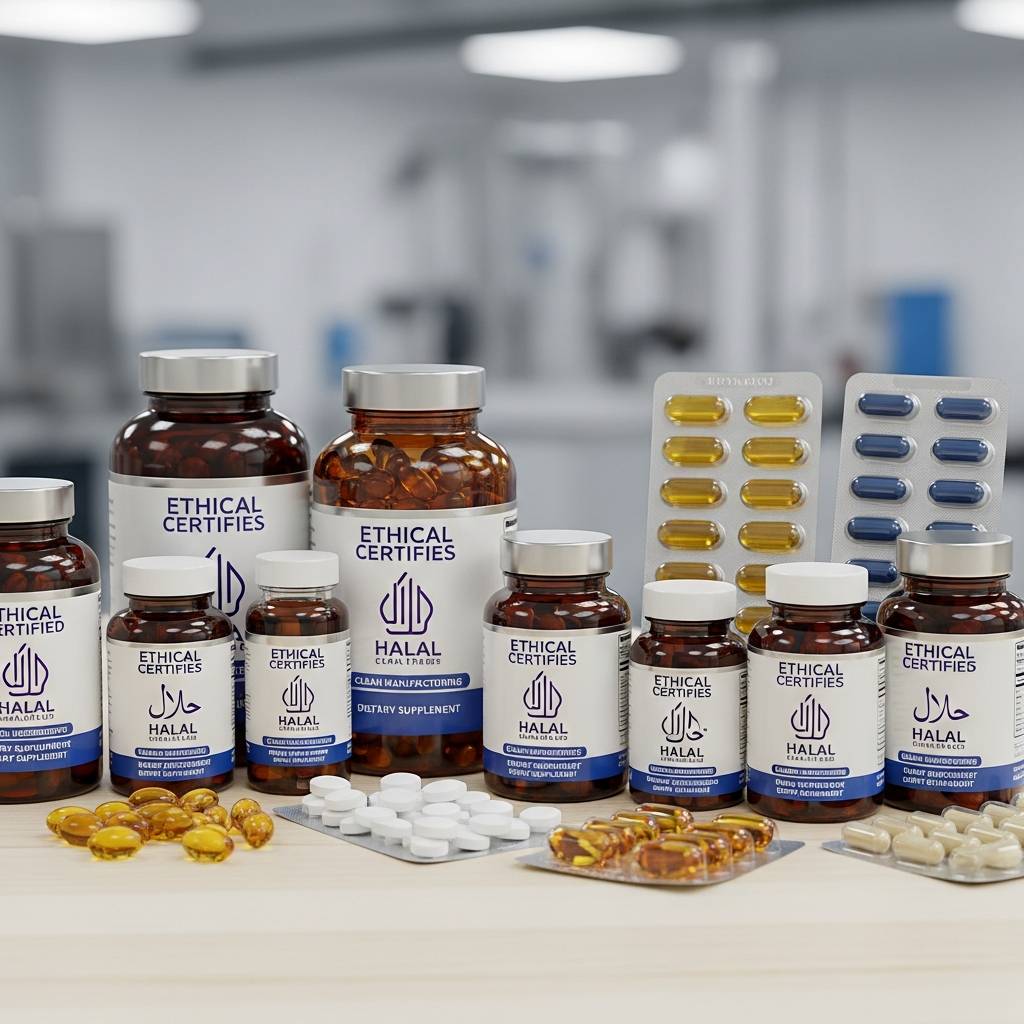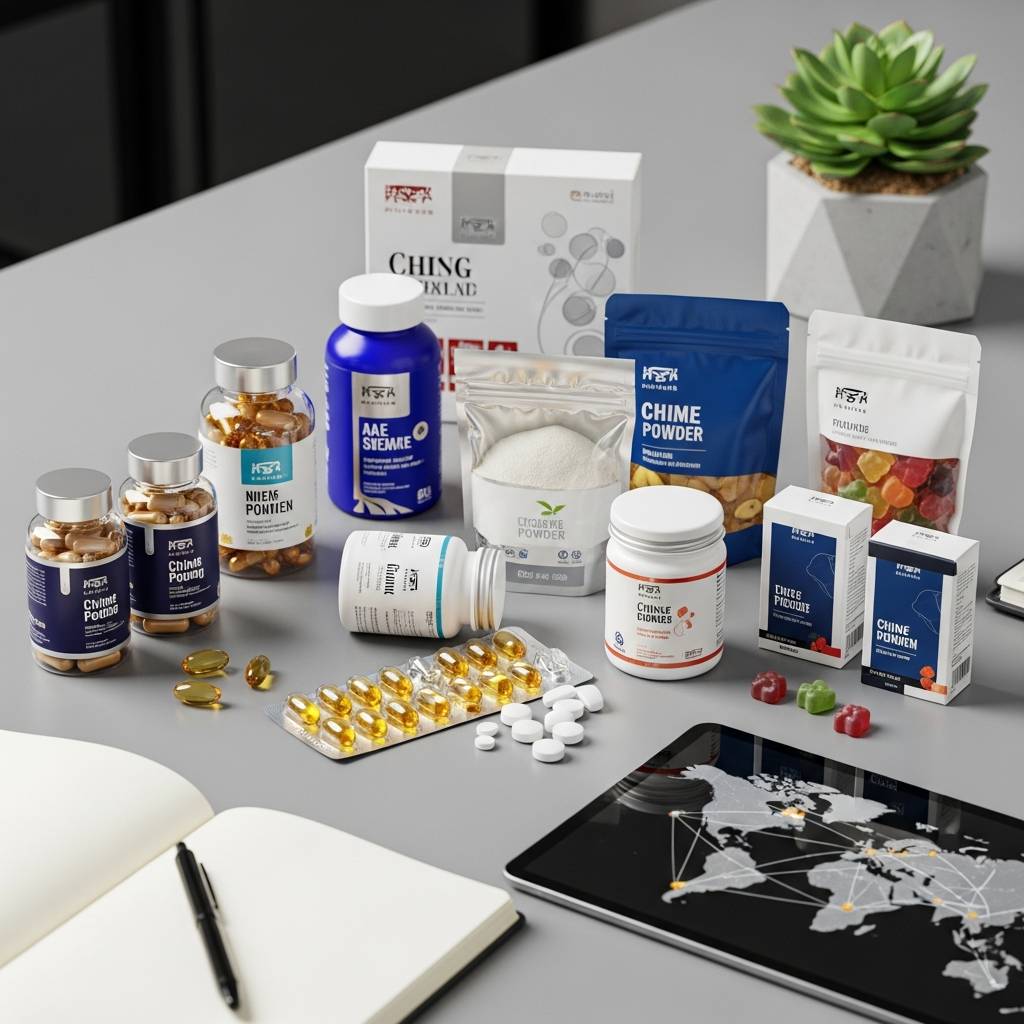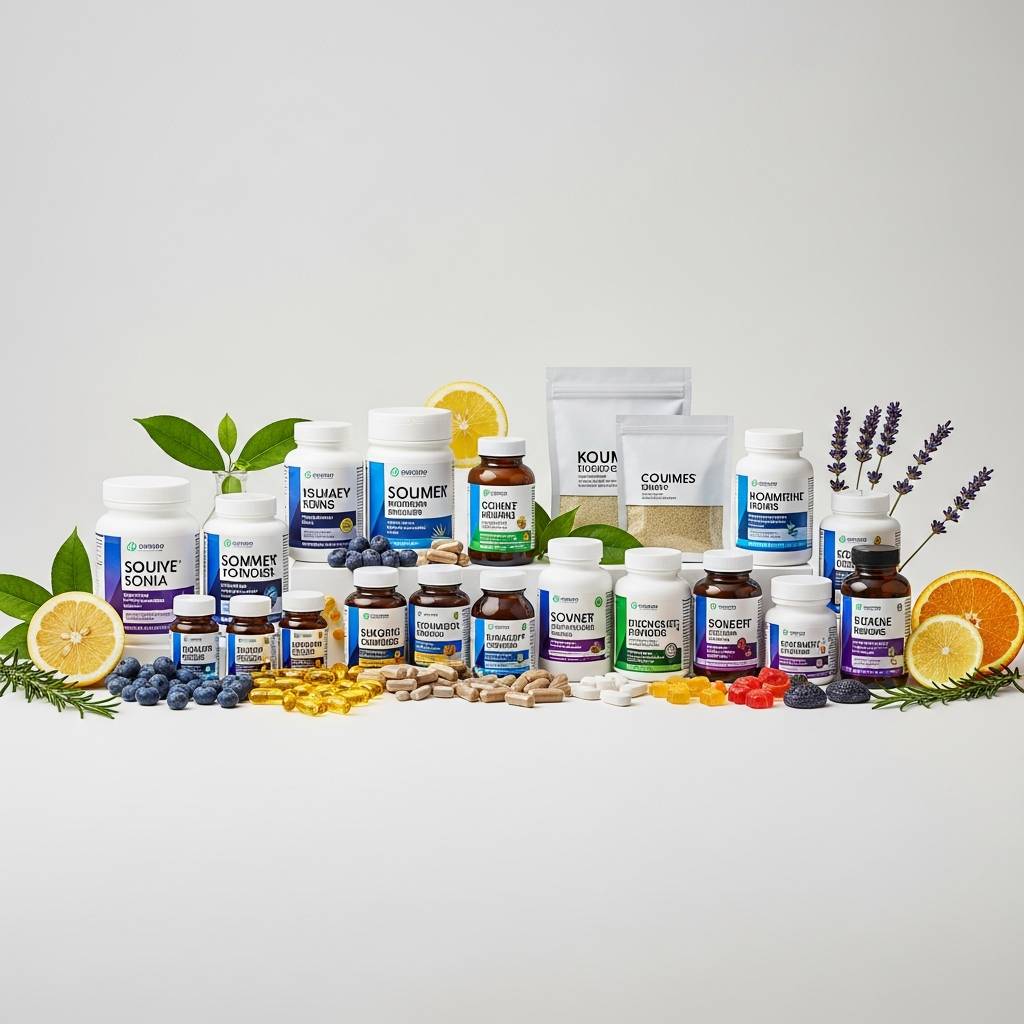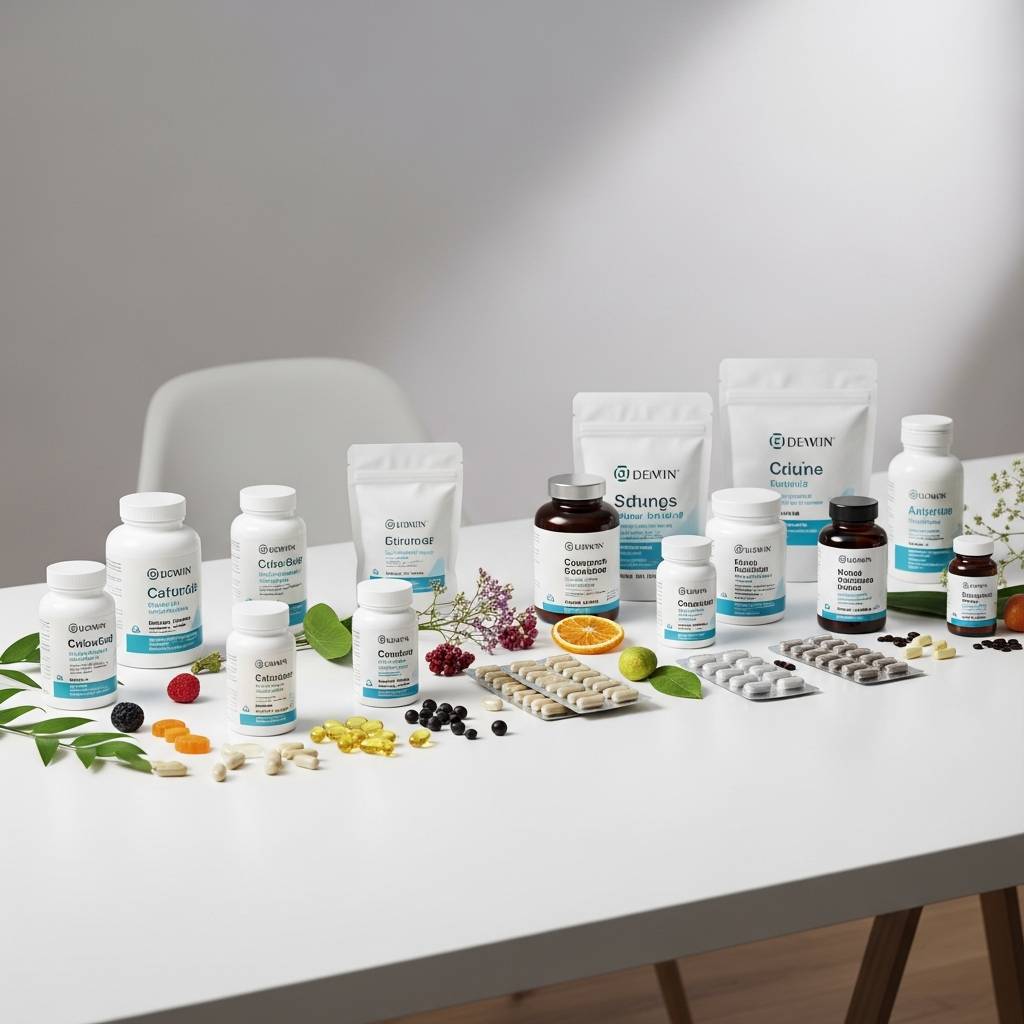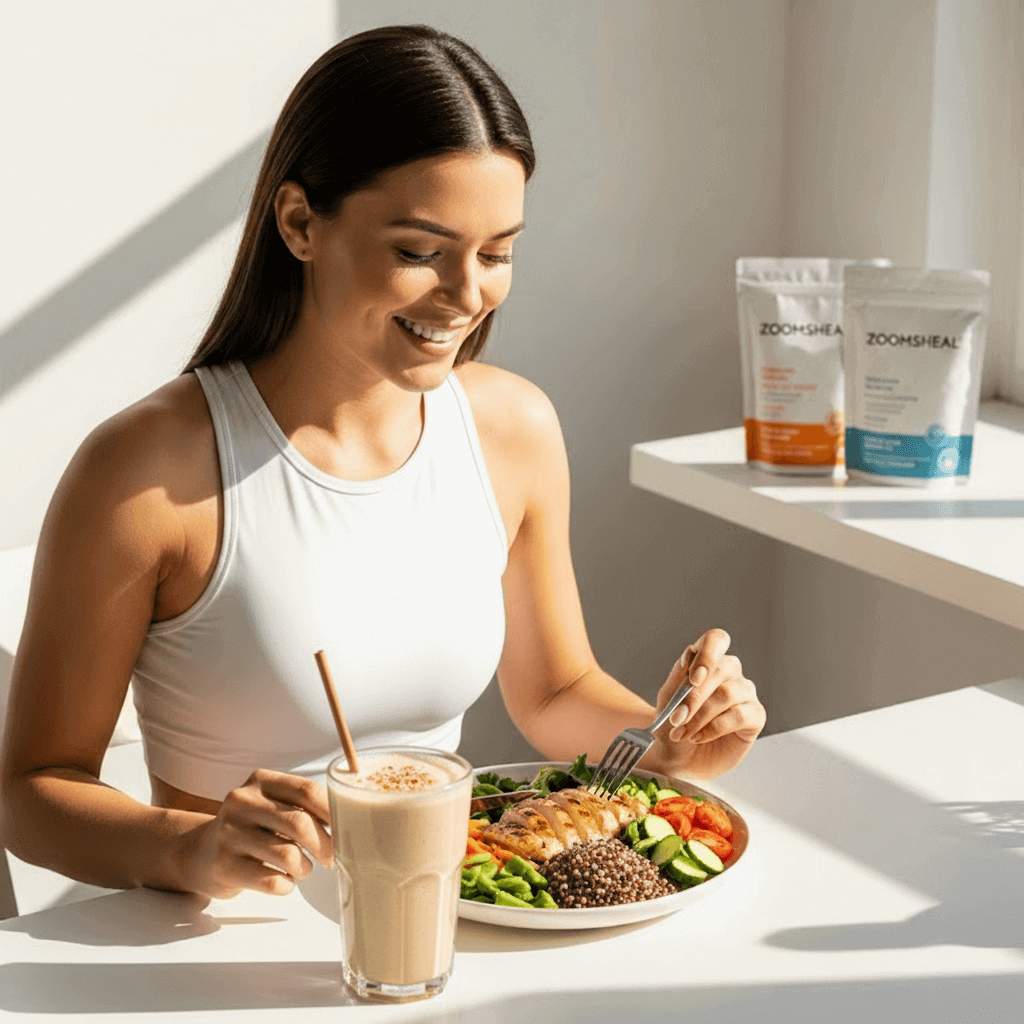The dietary supplement industry has experienced exponential growth in recent years, fueled by increased consumer awareness of health, nutrition, and wellness. From immunity boosters to cognitive enhancers, personalized nutrition to plant-based supplements, the market offers enormous opportunities for entrepreneurs. However, building a successful supplement brand is not simply a matter of putting ingredients in a bottle—it requires a deep understanding of market dynamics, scientific formulation, regulatory compliance, production quality, and strategic branding. This guide will provide a comprehensive, professional roadmap for launching your own supplement brand in today’s competitive landscape.
Why Start Your Own Supplement Brand?
Understanding why entering the supplement market can be lucrative is the first step in creating a strong brand strategy. The industry is projected to continue its steady growth, driven by lifestyle changes, aging populations, and increasing consumer interest in preventive health measures. According to market research, global dietary supplement sales surpassed $150 billion in 2024, with categories like immune support, weight management, and cognitive health experiencing the fastest growth.
Identifying Market Opportunities
Successful brands often emerge by identifying gaps in the market. For instance, despite the proliferation of multivitamins, there is a growing consumer demand for personalized and high-bioavailability formulations. Consumers are increasingly seeking products backed by scientific evidence, natural ingredients, and convenient delivery formats such as gummies, powders, or liquid shots. Additionally, niche segments like vegan, allergen-free, or sustainably sourced supplements present opportunities for differentiation.
Understanding Consumer Behavior
Building a brand requires a nuanced understanding of the target audience. Today’s supplement consumers are well-informed; they often research ingredients, reviews, and certifications before purchasing. Key factors influencing their decisions include perceived efficacy, ingredient transparency, packaging, and brand trust. Millennials and Gen Z, for instance, value sustainability and ethical sourcing, while older adults prioritize clinically proven health benefits.
Market Challenges
Entering the supplement market is not without challenges. High competition, regulatory complexity, and the need for rigorous quality control make it essential to approach the venture with a strategic mindset. Many startups fail not because of poor product ideas but due to inadequate branding, regulatory oversights, or lack of differentiation. Therefore, understanding market trends, consumer needs, and potential risks is crucial before committing resources to product development.
By starting with a clear picture of market opportunities and challenges, entrepreneurs can make informed decisions about product types, target demographics, and brand positioning—laying the groundwork for a sustainable supplement business.
Defining Your Brand Vision and Market Position
Once you have a clear understanding of the market landscape and consumer needs, the next step is to define your brand vision and establish a strong market position. This step is crucial because a compelling brand identity differentiates your products in a crowded market and builds lasting consumer loyalty.
Crafting a Clear Brand Vision
Your brand vision serves as the guiding principle for all decisions, from product development to marketing. A strong vision articulates the value you aim to deliver and the philosophy behind your brand. For instance, a brand may focus on “science-backed wellness solutions for modern lifestyles” or “sustainably sourced supplements that prioritize health and the planet.” Such clarity not only informs internal strategies but also resonates with consumers seeking purpose-driven products.
Identifying Your Unique Selling Proposition (USP)
Differentiation is key in the supplement industry. Your USP should address unmet consumer needs or offer benefits that competitors do not. Examples of USPs include:
-
Proprietary Formulas: Developing blends of ingredients that offer unique synergistic effects.
-
Enhanced Bioavailability: Formulating supplements for maximum absorption and efficacy.
-
Sustainability: Using ethically sourced ingredients and eco-friendly packaging.
-
Transparency: Offering full disclosure of sourcing, testing methods, and clinical evidence.
Analyzing competitors’ strengths and weaknesses helps you identify opportunities for differentiation. For instance, if most products in your target category are generic multivitamins, offering a vegan or allergen-free alternative can carve out a niche.
Market Segmentation and Targeting
Defining who your product is for is critical. Consider demographic factors (age, gender, location), psychographics (lifestyle, health goals, values), and purchasing behavior. For example, a supplement brand targeting busy urban professionals might emphasize convenient, ready-to-mix powders with cognitive support benefits, while a brand focused on active seniors may highlight joint health and heart support.
Segmentation also informs marketing strategy. By understanding which channels your target audience uses—social media platforms, e-commerce marketplaces, or physical retail—you can tailor messaging, campaigns, and promotions to maximize impact.
Positioning Statement
A positioning statement succinctly communicates your brand’s promise to the consumer and serves as the foundation for all marketing communications. For example:
“Our brand delivers scientifically formulated, plant-based supplements designed to support modern wellness while maintaining transparency, sustainability, and efficacy.”
A strong positioning statement ensures that every touchpoint—from packaging and website content to influencer collaborations—reinforces your core brand values and resonates with your target audience.
By investing time in crafting a clear brand vision, identifying a compelling USP, and segmenting your market, you establish a foundation for all subsequent steps, including product formulation, production, and marketing strategy. A well-defined market position ensures your brand stands out, attracts loyal customers, and sets the stage for sustainable growth.
Developing High-Quality Formulations
After defining your brand vision and market position, the next critical step is product formulation. The quality and efficacy of your supplements are central to your brand reputation. Poorly formulated products can lead to ineffective results, regulatory issues, and ultimately, brand failure. Therefore, a meticulous, science-driven approach is essential.
Scientific Foundation
Developing a credible supplement begins with evidence-based research. Entrepreneurs should rely on peer-reviewed studies, clinical trials, and reputable sources such as government dietary supplement fact sheets (e.g., NIH Office of Dietary Supplements) to select ingredients with proven benefits. For example:
-
Immune Support Supplements: Ingredients like vitamin C, vitamin D, zinc, and echinacea have strong research backing.
-
Cognitive Enhancers: Compounds such as omega-3 fatty acids, phosphatidylserine, and certain adaptogens show potential for mental performance and memory support.
-
Joint Health: Glucosamine, chondroitin, and turmeric are widely studied for their anti-inflammatory and joint-supporting properties.
Selecting ingredients backed by science not only improves product efficacy but also strengthens marketing claims and consumer trust.
Ingredient Selection and Synergy
Choosing the right ingredients involves more than picking popular compounds. Consider:
-
Safety: Avoid ingredients with known adverse effects or those banned in target markets.
-
Synergy: Some ingredients enhance each other’s absorption or effect, such as pairing fat-soluble vitamins (A, D, E, K) with healthy fats.
-
Bioavailability: Ensure your formula maximizes the body’s ability to absorb and utilize nutrients. Techniques include chelation, micellization, or encapsulation technologies.
Additionally, high-quality sourcing is crucial. Ingredients should be traceable, certified (e.g., GMP, organic), and free from contaminants such as heavy metals or microbial impurities. Many successful brands partner with reputable raw material suppliers that provide certificates of analysis (COAs) for every batch.
Dosage Optimization
Determining the right dosage is essential for both efficacy and safety. Too low a dose may render the supplement ineffective, while excessive doses can be unsafe or trigger regulatory scrutiny. Entrepreneurs should:
-
Refer to clinical studies to identify effective therapeutic ranges.
-
Comply with local regulatory limits for each ingredient.
-
Consider population-specific needs (e.g., older adults may require higher vitamin D intake).
Choosing the Right Delivery Form
Formulation success also depends on the delivery format. Common options include:
-
Capsules and Tablets: Popular for convenience and precise dosing, suitable for vitamins and herbal blends.
-
Powders: Allow larger doses and custom mixing into beverages; ideal for protein, greens, or adaptogen blends.
-
Softgels: Useful for fat-soluble compounds and liquid extracts.
-
Gummies: Increasingly popular for taste and compliance, especially among younger demographics.
Each form requires careful attention to stability, shelf life, taste, and absorption. For example, gummy formulations may need additional stabilization or sugar alternatives to preserve active ingredients.
Collaborating with Experienced Manufacturers
Working with a skilled OEM/ODM partner can dramatically simplify the formulation process. Experienced manufacturers can:
-
Offer guidance on ingredient combinations and dosage optimization.
-
Ensure compliance with local and international regulations.
-
Conduct stability, potency, and microbial testing for quality assurance.
-
Assist with scale-up and packaging design for commercial launch.
Pilot batches and ongoing testing are essential to verify the final product meets both efficacy and quality expectations before mass production.
By prioritizing scientific rigor, safety, ingredient quality, and bioavailability, entrepreneurs can develop supplements that are effective, trustworthy, and market-ready—forming the backbone of a successful brand.
Production, Packaging, and Compliance
After finalizing your supplement formula, production and packaging become critical steps in ensuring your product reaches consumers safely, legally, and appealingly. Manufacturing high-quality supplements requires rigorous processes, adherence to regulations, and attention to branding details.
Selecting the Right Manufacturer
Choosing a reliable contract manufacturer (OEM/ODM) is pivotal. Key considerations include:
-
Experience and Expertise: Manufacturers with a proven track record in dietary supplements can guide formula adjustments, optimize processes, and foresee potential production challenges.
-
Regulatory Knowledge: They should understand the regulatory frameworks of target markets, including FDA (US), EFSA (EU), Health Canada, or Middle East authorities, to avoid compliance issues.
-
Scalability and Flexibility: Manufacturers should accommodate small pilot batches and scale up efficiently as demand grows.
-
Transparency and Documentation: Look for partners providing Certificates of Analysis (COAs), batch records, and third-party testing results for traceability.
Collaborating with a reputable manufacturer reduces risks, ensures product quality, and streamlines time-to-market.
Quality Control and Assurance
Quality is the foundation of consumer trust. Effective quality control covers every stage:
-
Raw Material Testing: Verify purity, potency, and absence of contaminants such as heavy metals, pesticides, or microbes.
-
In-Process Monitoring: Ensure correct ingredient proportions, mixing consistency, and proper encapsulation or tablet compression.
-
Final Product Testing: Test stability, shelf life, and potency to ensure that consumers receive a safe and effective product.
-
Third-Party Verification: Independent lab testing reinforces credibility and builds consumer confidence, particularly for e-commerce or international markets.
Regulatory Compliance
Compliance with local and international regulations is non-negotiable. Consider:
-
Labeling Requirements: Ingredient lists, serving size, allergen warnings, expiration dates, and legally required disclaimers.
-
Health Claims: Only permitted claims supported by scientific evidence should be used. Statements like “supports immune health” are generally acceptable, whereas “prevents disease” may be classified as drug claims.
-
New Ingredient Notifications: In certain jurisdictions, novel ingredients require pre-market notification or approval.
Failing to comply can lead to fines, recalls, or reputational damage, making early consultation with regulatory experts crucial.
Packaging Strategy
Packaging serves both functional and marketing purposes:
-
Product Protection: Choose materials that preserve stability and potency. For example, UV-resistant bottles protect light-sensitive vitamins, while airtight pouches maintain freshness.
-
Consumer Appeal: Design should align with your brand identity, clearly communicate benefits, and comply with labeling regulations.
-
Sustainability: Eco-conscious packaging, such as recyclable or biodegradable materials, resonates with modern consumers and can be a differentiator.
-
Portion Control and Convenience: Single-serve sachets, gummies, or resealable pouches enhance usability and adherence.
International Market Considerations
If your brand targets multiple countries, you must navigate varying regulations and standards:
-
Certification Requirements: Some countries require GMP certification, organic labeling verification, or halal/ kosher compliance.
-
Import/Export Compliance: Understand tariffs, ingredient restrictions, and customs documentation.
-
Consumer Expectations: Cultural preferences may influence taste, format, and packaging design. For example, gummy supplements are highly popular in the US and Europe but may have lower adoption in other regions.
By carefully integrating production expertise, rigorous quality control, compliance with regulations, and thoughtful packaging design, your supplement brand ensures that products are not only effective and safe but also market-ready and appealing. This phase bridges formulation with market launch, laying the foundation for brand credibility and consumer trust.
Marketing, Launch Strategy, and Growth
Launching a supplement brand is only the beginning; sustained success depends on strategic marketing, effective distribution, and continuous growth initiatives. In today’s competitive wellness market, a strong marketing strategy combined with data-driven decisions is essential to reach and retain customers.
Building a Strong Digital Presence
-
Website Optimization: Your website serves as the brand’s primary touchpoint. It should offer clear product descriptions, ingredient transparency, dosage guidance, customer testimonials, and user-friendly navigation. Optimizing for search engines (SEO) ensures your products appear in relevant searches, increasing visibility and credibility.
-
Content Marketing: Educational content such as blog posts, videos, infographics, and webinars positions your brand as an authority. For example, articles explaining the science behind your ingredients or wellness tips help attract informed consumers and build trust.
-
Social Media Engagement: Platforms like Instagram, TikTok, LinkedIn, and Facebook allow brands to engage directly with their audience. Sharing behind-the-scenes production insights, success stories, and health tips creates authenticity and encourages community building.
Influencer and Partnership Marketing
-
Health and Fitness Influencers: Collaborating with influencers who share authentic experiences with your products can amplify reach. Focus on influencers whose audience aligns with your target demographic for higher engagement.
-
Professional Endorsements: Dietitians, nutritionists, or healthcare professionals can add credibility, particularly for scientifically complex products like cognitive enhancers or specialized supplements.
-
Retail Partnerships: Gym chains, health stores, pharmacies, or wellness platforms expand physical distribution and exposure to offline consumers.
Launch Strategy
-
Pre-Launch Buzz: Build anticipation through email campaigns, social media teasers, and influencer previews. Collecting early reviews or testimonials can generate social proof for the launch.
-
Promotional Campaigns: Launch promotions, limited-time offers, or subscription discounts encourage trial purchases and early adoption.
-
Customer Feedback Loop: Gather and analyze early customer feedback to refine messaging, packaging, and product improvements.
Sales Channels and Distribution
-
Direct-to-Consumer (DTC): Selling via your own website allows greater control over pricing, customer experience, and brand storytelling.
-
E-commerce Marketplaces: Platforms such as Amazon or Shopify help increase visibility and provide access to large, ready-made audiences.
-
Wholesale and Retail: Partnerships with gyms, pharmacies, and wellness retailers expand your brand’s reach and credibility.
-
Subscription Models: Monthly subscriptions for popular products ensure recurring revenue and improve customer retention.
Customer Retention and Community Building
-
Loyalty Programs: Reward repeat customers with discounts, points, or early access to new products.
-
Educational Outreach: Continuous engagement through newsletters, online workshops, and social media content nurtures informed and loyal customers.
-
Responsive Customer Service: Addressing inquiries promptly and effectively strengthens trust and brand reputation.
Long-Term Growth Strategies
-
Product Line Expansion: Introduce new formulations, flavors, or complementary products based on market trends and consumer feedback.
-
Global Market Entry: Research international regulations, certifications, and cultural preferences before expansion. Tailoring products to local tastes and compliance requirements can increase adoption.
-
Data-Driven Optimization: Monitor sales metrics, website analytics, and marketing campaign performance. Continuous data analysis allows iterative improvements in product development, pricing, and promotional strategies.
-
Innovation and Adaptation: Stay updated on scientific research, emerging ingredients, and health trends to maintain a competitive edge and evolve your product portfolio.
By integrating digital marketing, strategic partnerships, effective sales channels, and continuous engagement, your supplement brand can achieve both immediate market impact and sustainable long-term growth. Marketing and growth strategies transform a high-quality product into a recognized and trusted brand in the health and wellness space.
Conclusion
Launching your own supplement brand is a multifaceted journey that combines market insight, scientific formulation, regulatory compliance, high-quality production, strategic branding, and effective marketing. Success is not determined solely by creating a product but by building a holistic brand that resonates with consumers, delivers real health benefits, and maintains credibility over time.
By thoroughly understanding market trends and consumer needs, defining a strong brand vision, developing evidence-based formulations, ensuring production quality and regulatory compliance, and implementing targeted marketing strategies, entrepreneurs can establish a supplement brand capable of sustainable growth. The health and wellness market offers enormous opportunities for those who approach it with strategic planning, scientific rigor, and an unwavering commitment to quality and consumer trust.
Remember, a supplement brand is not just about selling capsules or powders—it is about creating meaningful solutions that improve lives and fostering relationships with an informed and engaged customer base. With diligence, innovation, and strategic execution, your brand can thrive in the competitive supplement industry and stand out as a trusted name in wellness.

